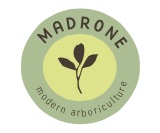Follow Us x
Frequently-Asked Questions for Madrone Modern Arboriculture
Q: What's an Arborist?
A: An arborist is an individual dedicated to tree care. Good arborists are typically certified through the International Society of Arboriculture though a few other accrediting bodies are also recognized, mostly in Europe.
Q: When should I hire an Arborist?
Consider hiring an arborist to plant, prune, preserve and remove trees and shrubs you own or that effect property you own. A skilled arborist can help you select the appropriate species for your landscape and ensure it is planted properly. Young trees should be pruned to establish structure and reduce the need for structure clearance and risk of storm damage. City living can be tough on trees. Exposure to forces usually mitigated by a forest as well as mechanical injuries from cars, construction, etc. can cause branch failures. These wounds require proper care and can be quite dangerous for homeowners and DIYer's. Only certified arborists should remove trees! At worst serious injury or death can occur not to mention property damage of varying degrees.
Q: How do I shop for an Arborist?
A: Look for ISA certified arborists that are licensed and insured. Both Oregon and Washington require arborists to have either a CCB or LCB license. Avoid landscapers who do not specialize in this type of work or people going from door to door offering hourly rate work. Poorly done tree work is a permanent injury to your tree that can introduce rot, create future hazardous conditions, and ruin the aesthetic appeal of your trees. A reputable arborist will give you an estimate and describe the work they recommend.
Q: How old is my tree?
A: Size and age are not tightly correlated in trees. The height of a tree reflects the quality of your site for growing trees of that species. The diameter of the tree is dependent on it's access to light. Which is why arborists tend to avoid giving a tree an age range and will instead refer to it as being young, mature, or overmature. These terms roughly correspond to a tree being in the first third, second third, or last third of its life. Typically speaking landscapes are installed when a home is built. If you have a large tree and an old home odds are good that the tree was planted when the home was built.
Q: Is my tree going to fall over!?!
A: Almost certainly no. Root plate failures are not common, although they do happen and if you believe your tree maybe unstable you should call a Tree Risk Assessment Qualified arborist immediately. More common are partial failures where in a portion of tree or branch fails and impacts person or property a TRAQ arborist can help you assess the level of risk associated with your tree.
Q: When should I prune my trees?
A: When a tree is young pruning should be focused on establishing favorable structure and avoiding permanent structures. When a tree is mature it should be pruned to maintain clearance from structures, alleviate damage from storms, and to have accumulated deadwood removed. Overmature trees should be pruned to increase longevity. This may be done through weight reduction pruning, reducing over extended branches or, removing hazardous tree parts. Your arborist should identify and explain the reasons for pruning during the estimation process.
Q: What time of year should I prune my trees?
A: Tree pruning can typically happen any time of year. This statement comes with some hug caveats! While pruning is unlikely to drastically effect tree health at any given time there are species specific reasons to avoid certain seasonal pruning for both health and aesthetic reasons. Talk to your arborist to avoid inviting insects and fungi into your tree or causing unsightly injuries.
Q: How much can I remove from my tree?
A: Depends on the species and management strategy. An apple tree maintained for fruit production in your front yard can handle a greater reduction than your shade trees out back. Fruit trees maybe cut drastically to be kept short and full of flowering sprouts. Shade tree health can be significantly impacted if 25% or more of the canopy is removed. Additionally, trees tend have a hard time closing wounds much bigger than 4"-6".
Q: Do I need to water my trees?
A: The short answer is yes. Many landscape trees are from different climates that are accustom to different moisture regiments. Trees from the Midwest and southern North America are used to wet summers with regular rainstorms while our native trees are more accustom to water coming in the winter. Ask an arborist or nursery employee about water requirements when you purchase your trees.
Q: How should I water my trees?
A: Slowly, the majority of tree roots are located in the top 24" of soil and your goal is to get water to this zone. Lawn sprinklers are often not enough to get water into these deeper soil horizons and forcing your trees to compete for moisture here can create surface roots that are susceptible to damage. You should use a watering bag or bucket for young trees. You may need to set up soaker hoses for larger more established trees. Consider removing turf from around trees and substituting organic mulch and small shrubs or ground covers that require less water.
If you have further questions or would like to schedule a consultation please contact us through our website or email me directly at brenden@madronemodern.com.


